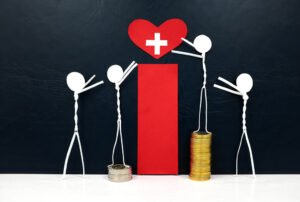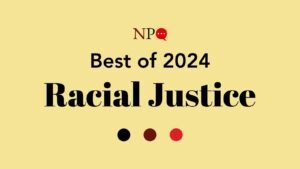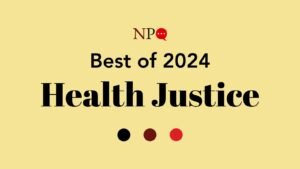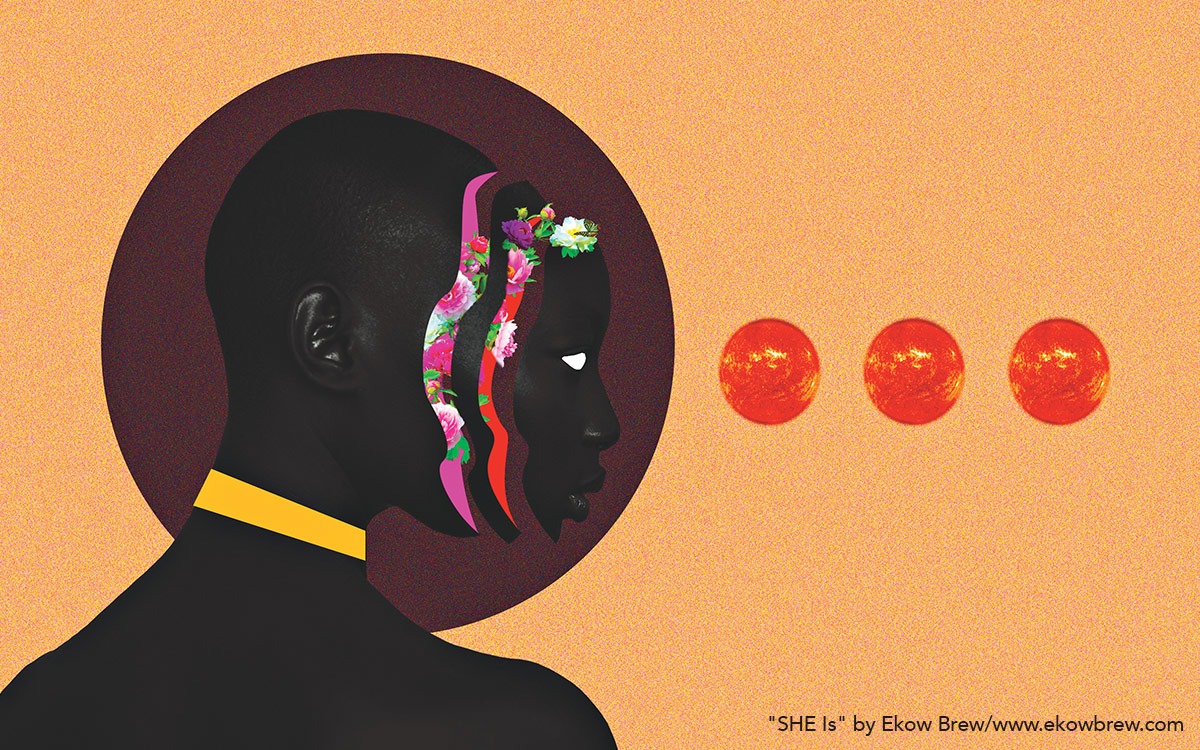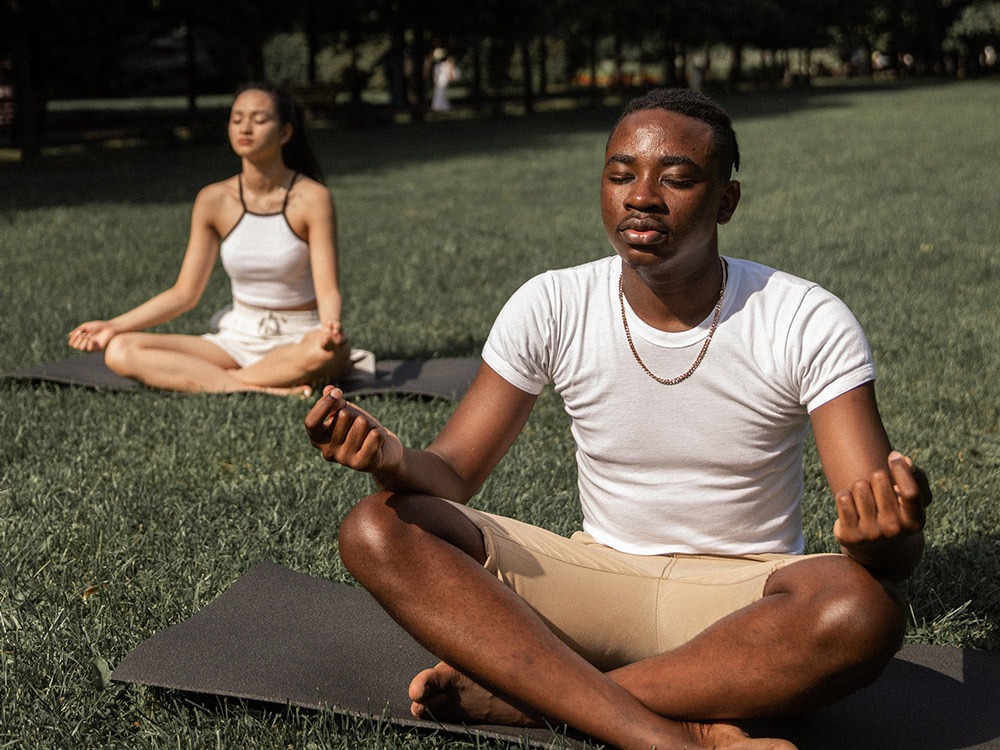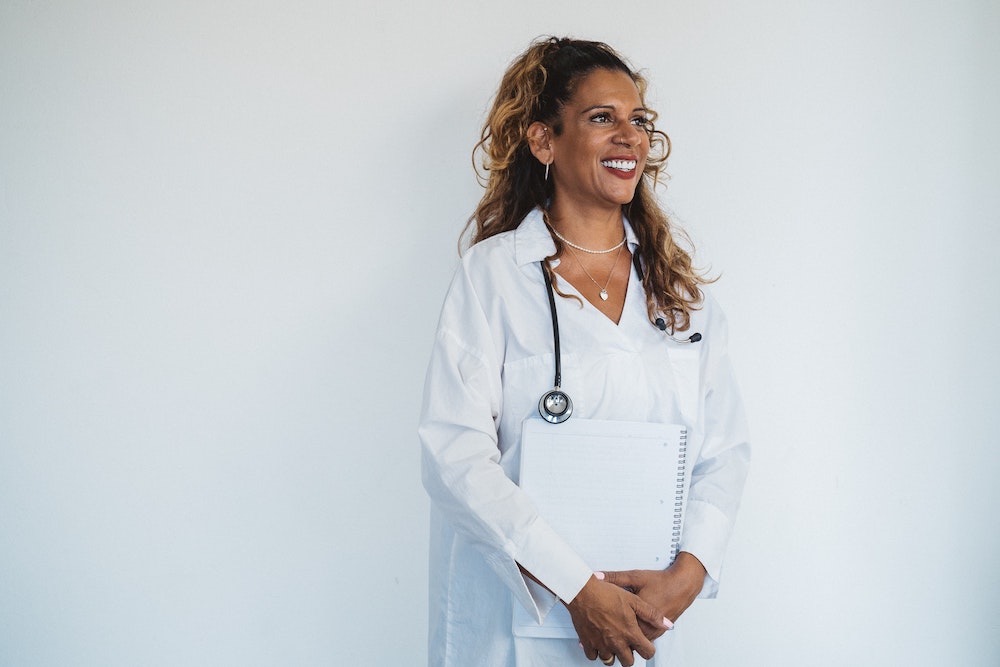
This is the fourth installment of a five-part series, Reclaiming Control: The History and Future of Choice in Our Health, examining how healthcare in the US has been built on the principle of imposing control over body, mind, and expression. However, that legacy stands alongside another: that of organizers, healers, and care workers reclaiming control over health at both the individual and systems levels. Published in five monthly installments from July to November 2022, this series aims to spark imagination amongst NPQ’s readers and healthcare practitioners by speaking to both histories, combining research with examples of health liberation efforts.
In their new book, Inflamed, doctors Rupa Marya and Raj Patel explore how colonialism makes us sick while also shaping our core beliefs about how healthcare providers should make us better. For example, Lakota elders in the book describe the forces that led to widespread prevalence of diabetes in their communities: colonizers arrived and dammed a river that traditionally fertilized a rich river valley where nutritious food and medicinal plants utilized by local peoples grew. As this ecosystem was erased, and as the impacts of erasure and assimilation took hold, the Lakota became less active and were forced to rely on the food and medicine of their oppressors, rather than their ancestors. Marya and Patel point out that skeletal evidence backs up these claims, showing a marked difference in Indigenous remains excavated before and after European invasion. However, they also point out a paradox that comes with this data, writing:
If you find yourself more convinced by studying skeletal remains than by listening to the oral histories of Indigenous people, you’re a participant in a colonial system of organizing truth. Reconstructing history through bones misses much that oral histories capture. Yet, in a colonial world, stories passed down by Indigenous elders cannot be considered true until they are validated by the empires that colonized them.
This tenet applies not only to our society writ large, but also to healthcare professionals. As physicians, the authors grapple with their own training, pointing out that modern clinical professionals are taught to be “biomedical technicians” rather than healers. Inevitably, they fall short when root causes of poor health, from structural racism to food insecurity, present themselves.
The COVID-19 pandemic and the national uprisings on race that took place in summer 2020 further exposed the shortcomings of our current paradigm for training, recruiting, and deploying healthcare workers. Coverage of the harrowing experiences that healthcare workers endured over the past two and a half years highlights not only the trauma that the pandemic inflicted on such workers as they cared for surges of critically ill patients with limited supplies and equipment; it also shows the stress caused by underpayment and overwork, divisive, politically driven policy shifts, and the disproportionate morbidity and mortality burden that low-income and BIPOC communities face. BIPOC healthcare workers, as well as frontline support staff, home care workers, and service staff, all of whom are deprioritized within the medical hierarchy, experienced additional layers of threat: racism and xenophobia inside and outside of their institutions and a compounded mental health toll. Since the pandemic began, 20 percent of healthcare workers in the US have quit their jobs, and healthcare labor shortages are now a major challenge for the sector.
Healthcare staff’s feelings of powerless in the face of broader societal forces, however, are not unique to the pandemic. Almost two decades ago, as an undergraduate patient advocate, I experienced this dynamic up close. At clinics in East and West Baltimore, I had the opportunity to partner with individuals and families who presented not just with individual health issues like asthma and lead poisoning, but also with social issues: a crumbling rowhome with asbestos dust; limited fresh food options in the neighborhood; a bureaucratic social services system quick to judge Black and Brown families. Many of the clinics I worked in had one social worker for every 5,000 patients, presenting an impossible capacity challenge—even when medical staff asked about patients’ life situations and referred patients to social work or our advocacy program to identify helpful resources. While not all the clinics’ physicians, nurses, or medical staff felt obliged to address the impacts of social forces on their patients’ lives, most did—but they had limited training, resources, and time to do so.
In the first few articles of this series, we covered the political history of our healthcare system and the role that organizers and healers play in imagining what the future could hold. But what role will healthcare workers have in that future? As actors who benefit from the existing healthcare system while facing harsh challenges within it, healthcare professionals hold a specific positional power and can play a unique role. Even for those of us that have faced trauma inside healthcare institutions, or who have reason to distrust the system as a whole, healthcare workers can still act as trusted messengers and crucial lifelines during the uncertainty of seeking care for ourselves or loved ones.
Bringing Training into the 21st Century
Much of medical education’s current pillars—the separation of public health and medicine, a focus on treatment rather than prevention—can be traced to a 1910 report prepared by Abraham Flexner. In an effort to standardize curricula across medical schools, the report prioritized a biomedical care model that excludes social and environmental factors. It reinforced a healthcare model, including a paternalistic doctor-patient complex, adopted by institutions that only white males could access. That prioritization also led to the closure of many historically Black medical colleges.
What would it look like to reimagine the tenets of healthcare education through a host of lenses, voices, and teachers who take a more holistic, healer-rooted approach? Many training programs are now adding anti-racism frameworks and a focus on health equity to their classrooms. The Institute for Healing Medicine and Justice, launched in 2020 by a community of medical and graduate students at the Joint Medical Program of UCSF School of Medicine and UC Berkeley School of Public Health, envisions a “new medicine” that centers healing, community, and justice. They seek to bridge their own educational experiences with multidimensional healing paradigms that have long been promoted by women, people of color, disability activists, queer organizers, and healers across cultures.
Sign up for our free newsletters
Subscribe to NPQ's newsletters to have our top stories delivered directly to your inbox.
By signing up, you agree to our privacy policy and terms of use, and to receive messages from NPQ and our partners.
With a community of more than 3,000 people representing 300 institutions, the institute focuses on establishing a new, ground-up praxis for medicine, consisting of interdisciplinary research working groups, community healing gatherings, a justice hub, and a peer-reviewed publication. Along with the Othering and Belonging Institute and the Center for Race and Gender at UC Berkeley, the group published Toward the Abolition of Biological Race in Medicine: Transforming Clinical Education, Research, and Practice, which traces the history of white supremacy and racism in healthcare training. The publication also points out that epigenetics, the study of how the environment can alter gene expression, promises to deepen understanding of how racism—and not race—impacts health outcomes. The also launched the Freedom School for Intersectional Medicine and Health Justice, a community organizing effort led by Bernie Lim and Nicole Carvajal, both women of color in the Joint Program. The Freedom School re-imagines medical praxis and creates community for women of color in medicine, offering a community organizing model, an alternative syllabus populated by critical studies frameworks, and a fellowship for people interested in intersectional healing, medicine, and/or public health initiatives.
Power Outside the Exam Room
One additional effect of the Flexner recommendations was that advocacy training is largely absent from clinical curricula. While this has started to shift in the past 20 years, such training is still rarely seen in clinical classrooms, and when included, it varies from program to program: some programs focus on social determinants of health policy, while others focus more on advocacy to ensure the healthcare profession’s viability as a whole. This lack of training contributes to missed opportunities for the sizable healthcare workforce— trusted experts with a front row view of the challenges involved in improving patients’ health—to leverage their collective power to enact change.
People Power Health, which trains health professionals in community organizing skills in order to set them up to redress power and resource inequities, aims to agitate healthcare workers to co-create just systems for communities, caregivers, and clinicians alike via trainings and fellowships targeted at different sections of the healthcare worker ecosystem, including clinicians interested in health justice, immunization professionals, climate health organizers, healthcare professionals focused on civic engagement and voting, and more.
Pedja Stojicic, executive lead of People Power Health and a physician by training, shares the role that a power-building community for healthcare professionals can play in moving physicians from an individualistic, passive mindset to one of collective action:
Right now, many [medical residency programs] are thinking about health equity tracks…. But what is still problematic is its [just] awareness generation. Medical education itself is organized in such a way that is focused on individuals. The fact that [participants in People Power Health programs] often need us to see their colleagues as a sense of solidarity … in pursuit of change … is mind blowing. These are the facts of the system: a session outside of it can bring solidarity, hope, etc.
A collectivist approach may also enable healthcare professionals to move beyond defensiveness about their role in a system that often causes harm and to leverage their power beyond the context of an individual patient. Sam Gonzales, a member of the People Power Health core team, points out the value of the relational organizing on which the organization is focusing. Such organizing can be built upon to identify institutional or policy-level campaigns that members want to engage in—an antidote to “project proliferation,” in which healthcare trainees identify an initiative they want to engage patients or community members in, but without first building rooted relationships. “When I was in high school, I had a cancer diagnosis, and that helped me to see some of the health inequities that were in the Mexican health system…. and when I went into medical school, I saw that it was more than just a drug or a treatment that was involved,” shares Gonzales. “Racism, classism, poverty. That is how I came to politics, policy … to organizing. And then … wow, to meet other professionals who are working on these topics was incredible.”
Significant work remains to be done if we are to shift the healthcare system’s core pedagogy. These efforts, however, point to a small but growing movement that is underway, spearheaded by a growing number of healthcare professionals who refuse to accept the status quo. Often lifted up as heroes, healthcare staff are in reality humans frequently tasked with doing challenging jobs in a system with a long history of harm—and are increasingly also challenged to examine their own agency within that system. These models provide an emerging vision of how these individuals—charged with caring for the rest of us—can move from healthcare to healing.



